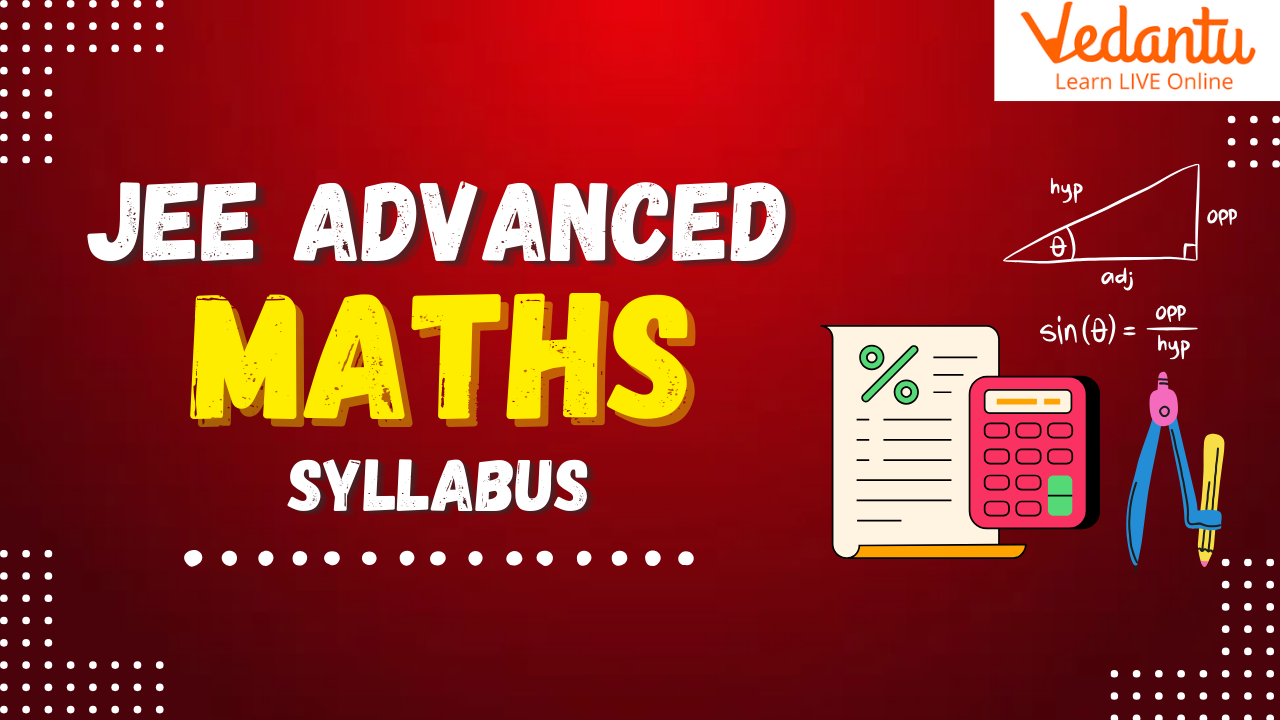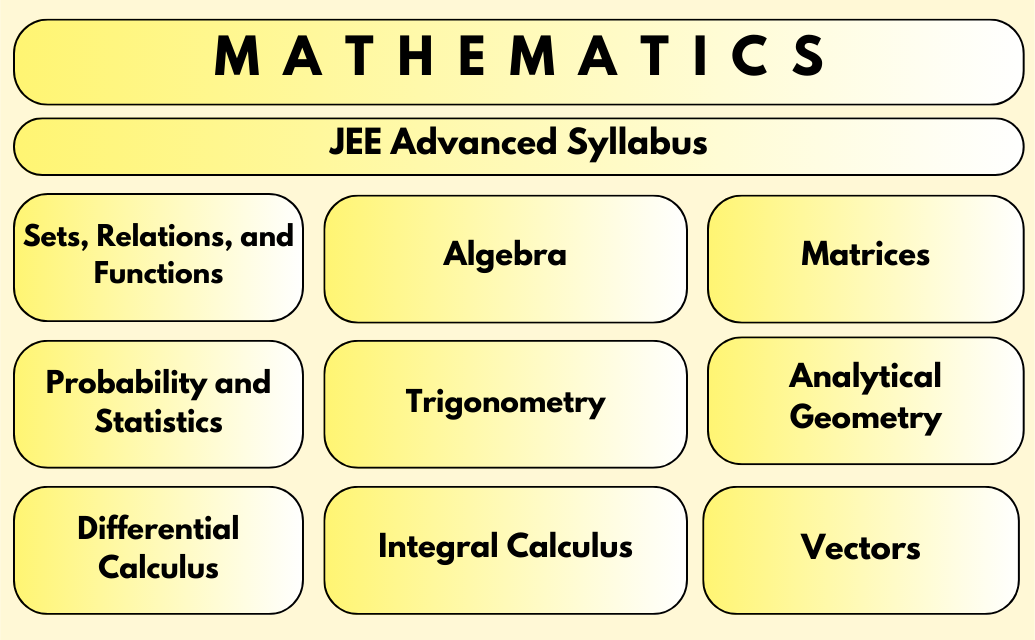JEE Advanced Updated Maths Syllabus 2024: Download The Topic-Wise PDF with Weightage












FAQs on JEE Advanced Maths Syllabus 2024 (Released)
1. How do I prepare for both the JEE Advanced and the board exams at the same time?
JEE Main and 12th Board exams usually always occur at the same time. It forces the student to focus solely on JEE preparation. As a result, it is critical to study for both the board examinations and the JEE at the same time. Aspirants who choose the correct content, books, and tutoring are far more likely to succeed in the exam. Certain publications, such as NCERT and HC Verma, feature a large number of questions from practical applications of principles that might help you study for both exams. Vedantu has all the materials that will be of great use when you face yourself against such a situation. Head over to the website and let our experts guide your way through.
2. What is the weightage for each topic in the JEE Advanced Maths Syllabus 2024?
The weightage for each topic in the JEE Advanced Maths Syllabus 2024 is not officially released by the Joint Entrance Examination (JEE) Advanced. However, based on past years' question papers, it is estimated that the weightage for each topic is as follows:
Algebra: 30%
Calculus: 35%
Coordinate Geometry: 20%
Vectors: 15%
3. What is the JEE Advanced Mathematics Syllabus for 2024?
The JEE Advanced Mathematics Syllabus for 2024 is based on the syllabus for Classes 11 and 12 of the Central Board of Secondary Education (CBSE) and other equivalent boards. It covers a wide range of topics, including algebra, calculus, coordinate geometry, and vectors.
4. What are the important chapters for each topic in the JEE Advanced Mathematics Syllabus?
Here are some of the important chapters for each topic in the JEE Advanced Mathematics Syllabus:
Algebra: Sets, relations, and functions, Complex numbers, Permutations and combinations, Quadratic equations, Binomial theorem, Sequences and series, Matrices and determinants
Calculus: Differential calculus, Integral calculus, Applications of calculus
Coordinate Geometry: Lines and circles, Parabolas, ellipses, and hyperbolas, Three-dimensional geometry
Vectors: Vector algebra, Applications of vectors
5. What is the difference between the JEE Main and JEE Advanced Mathematics Syllabus?
The JEE Main Mathematics Syllabus is less comprehensive than the JEE Advanced Mathematics Syllabus. The JEE Main Syllabus covers the essential topics from all four domains of mathematics: algebra, calculus, coordinate geometry, and vectors. The JEE Advanced Syllabus covers a more in-depth and rigorous treatment of these topics.





